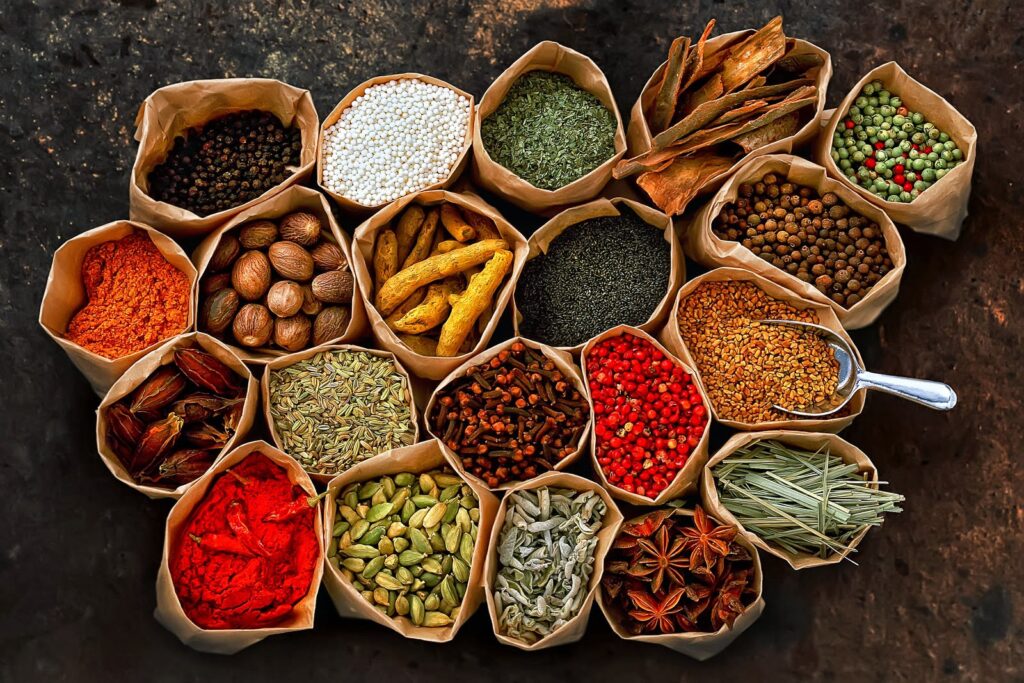During your Zanzibar Spice Tour, you’ll visit a traditional spice plantation, known locally as a shamba. These farms are often located in the lush interior of the island, in places like Kizimbani, Dole, or Kidichi. As you walk through the farm, your guide will point out various spice plants and explain how they’re cultivated, harvested, and used both locally and globally. These farms are typically family-run or community-operated, giving you a glimpse into daily rural life on the island.

🌱 Common Spices You’ll See (and Smell/Taste)
Zanzibar is often referred to as the “Spice Island” for good reason. On the tour, you’ll see a variety of aromatic spices in their natural growing state. Your guide will break open pods, crush leaves, or peel bark to let you smell and sometimes taste the fresh flavors:
Cloves – the island’s most famous export, used in both cuisine and perfumery.
Cinnamon – both bark and leaves are aromatic.
Nutmeg – from the nutmeg tree, both nut and mace are used.
Cardamom – sweet and spicy, used in teas and desserts.
Vanilla – a vine orchid with fragrant pods.
Peppercorns – black, white, green depending on processing stage.
Turmeric & Ginger – rhizomes used for flavor and medicinal properties.
Lemongrass – a tall grass with a lemony scent, often used in tea.
Ylang-ylang – a flowering tree whose blossoms are distilled into essential oils.
🥥 Other Plants & Fruits
Beyond spices, the tour includes a fascinating look at local tropical fruits and plants that thrive in Zanzibar’s warm, humid climate. You may sample:
Jackfruit – large, spiky, sweet fruit.
Starfruit – tangy, juicy fruit shaped like a star.
Bananas – several varieties, both sweet and cooking types.
Coconuts – often freshly picked and opened for drinking and eating.
Pineapples – small, intensely sweet local varieties.
Durian, rambutan, or papaya – depending on the season.
Your guide will explain how these fruits are used in everyday Zanzibari cuisine and medicine.
🍽️ Tasting and Demonstrations
One of the highlights of the tour is the chance to taste what you see. You’ll sip spiced teas, try slices of freshly cut fruit, and sample traditional snacks flavored with local spices. Some tours include a short cooking demonstration, where a local cook shows how spices are blended to make iconic Swahili dishes like pilau rice or coconut curries. It’s an interactive, hands-on part of the experience.
🛍️ Shopping Opportunity
At the end of the tour, many spice farms have a small on-site market or shop where you can buy their products. These include:
Dried whole spices
Essential oils
Natural soaps and creams
Spice blends for cooking
Everything is locally made, and your purchase directly supports the farmers and their communities. Prices are usually reasonable, and products are fresher than what you’d find in stores.
👨🌾 Local Guides
Your tour will be led by a knowledgeable local guide—often someone who has grown up on the island and has intimate knowledge of the plants and their uses. Guides are often multilingual and explain both the scientific and traditional uses of each spice or plant. Their stories and sense of humor bring the experience to life. It’s common for them to make fun “spice jewelry” (rings, hats, or necklaces) from banana leaves and flowers as you walk.
